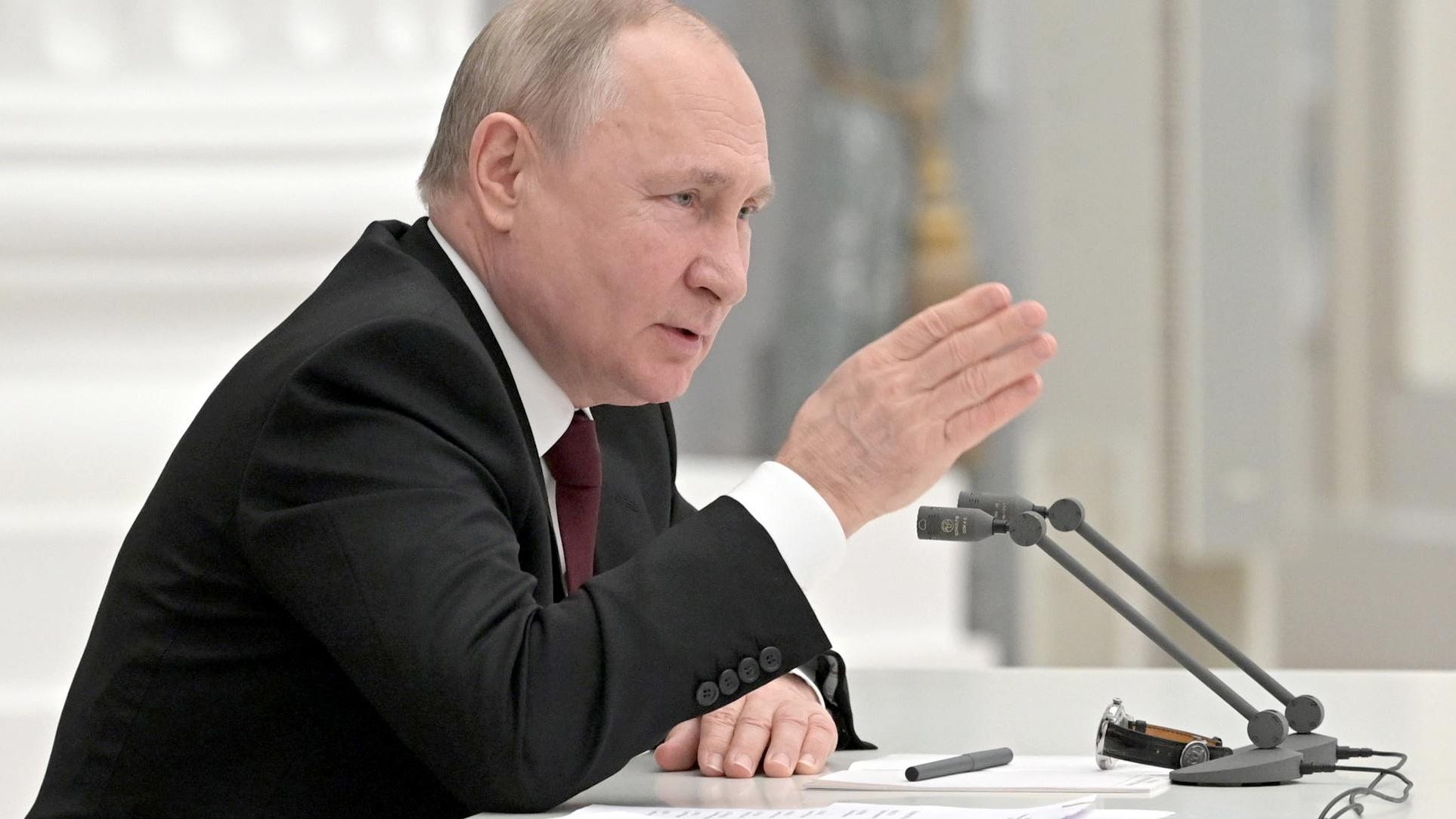Ruble Plunges To 80 Against The Dollar As Putin Recognizes Breakaway Republics
Topline Russia’s stocks and currency were the worst performers on global markets Monday, as President Vladimir Putin signed a decree recognizing two partially separatist-controlled regions in Ukraine as independent states, a move that provoked renewed threats of severe economic sanctions against Russia should it invade Ukraine.
Russian President Vladimir Putin holds a meeting of the Russian Security Council at Moscow’s … [+] Kremlin.
Alexei NikolskyTASS via Getty Images Key Facts The ruble fell as low as 80.2 against the dollar Monday before recovering slightly to 79.7, continuing a decline that began around the time of Russia’s 2014 invasion of Ukraine’s Crimean Peninsula, at which point the ruble was worth roughly 35 against the dollar.
The MOEX Russia Index plunged by about 10.5% Monday afternoon compared to the previous day’s close, landing at 10.4% under year-to-date and marking its biggest single drop since the invasion of Crimea.
Yields on Russia’s 10-year Federal Loan Obligation bonds hit a high of 10.64% Monday as the cost of insuring Russia’s sovereign debt against default rose to its highest since early 2016 and both Russia and Ukraine’s sovereign dollar bonds fell, Reuters reported.
Stock for majority state-owned energy company Gazprom—Russia’s largest company with $73.5 billion market capitalization—fell about 5% Monday compared to the previous day’s close.
However, Brent Crude, the international oil benchmark, rose 4.14% Monday to $96.95 per barrel, more than 25% over year-to-date—a good sign for the Russian economy, which is dependent on fuel exports.
Key Background As tensions around the Ukrainian border have risen, Russia’s economy has suffered. January 18, Russia canceled a weekly treasury bond auction, citing market volatility, Reuters reported. The U.S. has repeatedly warned it would implement unprecedentedly severe economic measures in the event of the invasion, and has readied a package of sanctions that would bar U.S. banks from processing transactions for major Russian banks, Reuters reported, citing unnamed sources. Additionally, President Joe Biden has announced that an invasion would result in the cancellation of Nord Stream 2, an $11 billion natural gas pipeline linking Russia to Germany and capable of moving 55 billion cubic meters of natural gas to Europe annually.
What To Watch For Russia, which relies on fuel revenues for 36% of its national budget, has benefited from rising oil prices, which have been driven up by the crisis. Renewed conflict between Russia and Ukraine could push oil to $150 per barrel, an all-time high, JTD Energy Services director John Driscoll told CNBC Monday. However, an invasion of Ukraine could disrupt Russia’s ability to sell fuel to trading partners like the EU, which currently relies on Russia for about 34% of its natural gas and about 27% of its oil. In January, the White House announced it was seeking alternative fuel sources for Europe, preparing for a scenario in which Russia would respond to sanctions by cutting off fuel shipments to Europe. Isolated from Western markets, Russia might choose to rely more heavily on China, which has absorbed billions of cubic meters of Russian natural gas since pipeline exports began in 2019. However, if Russia were forced to rely only on China to purchase its oil and gas, it would make Russia’s economy, with its “one-dimensional” reliance on fuel exports, “far more brittle,” a senior Biden Administration official said January 25.
Contra Despite its enormous geographical size and sometimes central position in world politics, Russia is not an economic powerhouse. Russia’s $1.48 trillion GDP is about half of Germany’s and about one tenth of China’s. “Russia is incredibly unimportant in the global economy except for oil and gas,” Harvard economist Jason Furman told the New York Times. “It’s basically a big gas station.”












 Bitcoin
Bitcoin  Ethereum
Ethereum  Tether
Tether  XRP
XRP  USDC
USDC  Solana
Solana  TRON
TRON  Lido Staked Ether
Lido Staked Ether  Dogecoin
Dogecoin